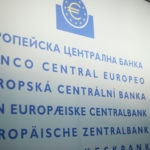Every time Mario Draghi speaks at the news conference after the European Central Bank’s (ECB) monthly monetary policy meeting, the markets hold their breath. And after he finishes, they react. In the wake of the 2008 crisis, the expectations created by the bank’s message have taken on added relevance. BBVA Research is aware of the importance of being able to gauge if the ECB’s message adequately reflects its policy and has used big data techniques to this end.

BBVA Research has released an Economic Observatory in which it presents the European Central Bank Monetary Policy Sentiment indicator based on ECB documents using Data Mining and Natural Language Processing techniques.
As the report explains, “central banks have taken on specific commitments and credible and transparent communication as monetary policy tools”. That makes “putting together an objective ECB monetary policy sentiment indicator very useful.”
What does the ECB talk about?
An analysis of ECB statements and news conferences since July 1999 through to December 2017 basically throws up six thematic areas: the economy, Economic and Monetary Union (EMU) integration, banking union, the financial crisis, conventional monetary policy, and non-conventional monetary policy.
The ECB’s message has changed over the course of time. BBVA Research’s study shows that before the global crisis (between 2000 and 2009), the dominant themes were conventional monetary policy (33%), the economy (28%), and EMU integration (15%). By contrast, during the crisis (between 2010 and 2017), the issues that received the most attention were non-conventional monetary policy (27%), conventional policy (21%), and the financial crisis (20%).
Issues of an economic nature have gained in importance in the past few months with the eurozone recovery already under way. EMU integration was an important subject until 2005 before losing prominence, while the banking union gained in importance between 2012 and 2015. Matters concerning the financial crisis took on added importance after the collapse of Lehman Brothers and during the worst days of the European debt crisis (30%). However, since Mario Draghi’s famous speech in 2012 in which he used the expression “whatever it takes,” topics related to the financial crisis having been losing ground, with the exception in 2015 and the Greek crisis.
“It’s no surprise”, BBVA Research points out, “that monetary policy is one of the most important themes in the ECB’s discourse”, varying over time. The ECB has spoken more about non-conventional monetary policy since 2008, a period that has seen the rollout and expansion of non-conventional measures (zero interest rates, TLTROs, the asset-purchase program), accounting for 45% of the average total in 2017.
The interconnection of themes through network analysis
BBVA Research has also looked at the interconnection of themes and the way these have changed over time. During the initial years of EMU between 1999 and 2007, the creation of the ECB and the single currency were significant moves in the integration process and were, therefore, at the forefront of the discourse.
Later, during the global financial crisis period from the third quarter of 2007 up until the end of 2013, ECB monetary policy became increasingly complex and non-conventional measures appeared. From 2014 these policies formed the main points of connection between themes. Since the middle of 2017, the focus has been on the strategy for moving away from these policies.



The ECB monetary policy viewpoint
In general, positive messages by central banks are linked to positive economic and financial conditions, and sentiment is negative when monetary policy is more lax. As a result, the ECB’s take on things is an indicator of the monetary policy’s degree of tightness or laxity. On this basis, BBVA Research has identified two main periods for the ECB’s mind-set.
The period between 1999 and 2007, that is, the period prior to the crisis, projected a positive perspective. This indicates that the direction of ECB monetary policy was more contractive, particularly between 2004 and 2007 (coinciding with economic prosperity). In the second period between 2007 a 2017, the tone gradually lightened until 2014 when monetary policy was at its most lax. Since then, the tone has become more neutral as the ECB prepares to discard non-conventional measures.